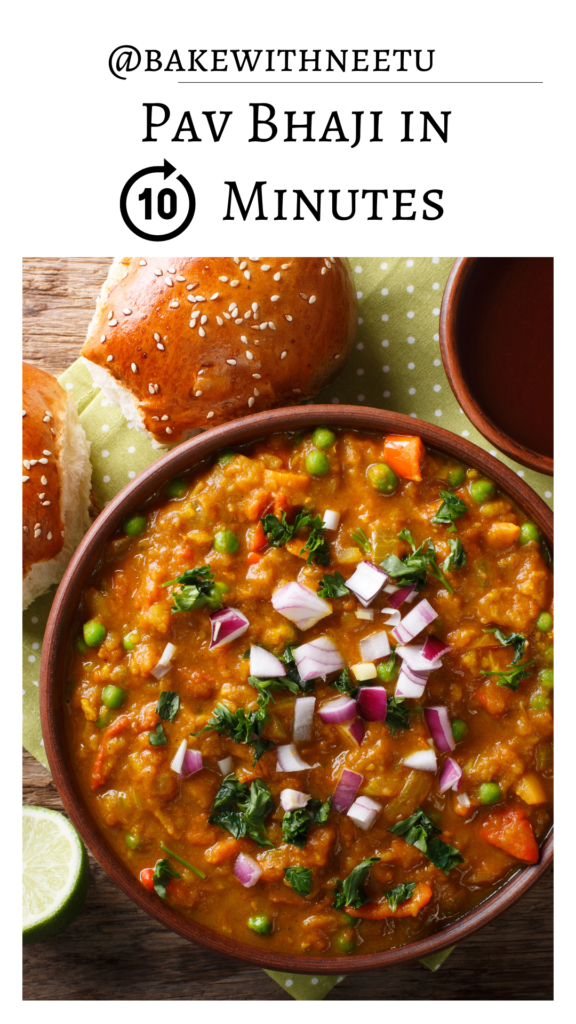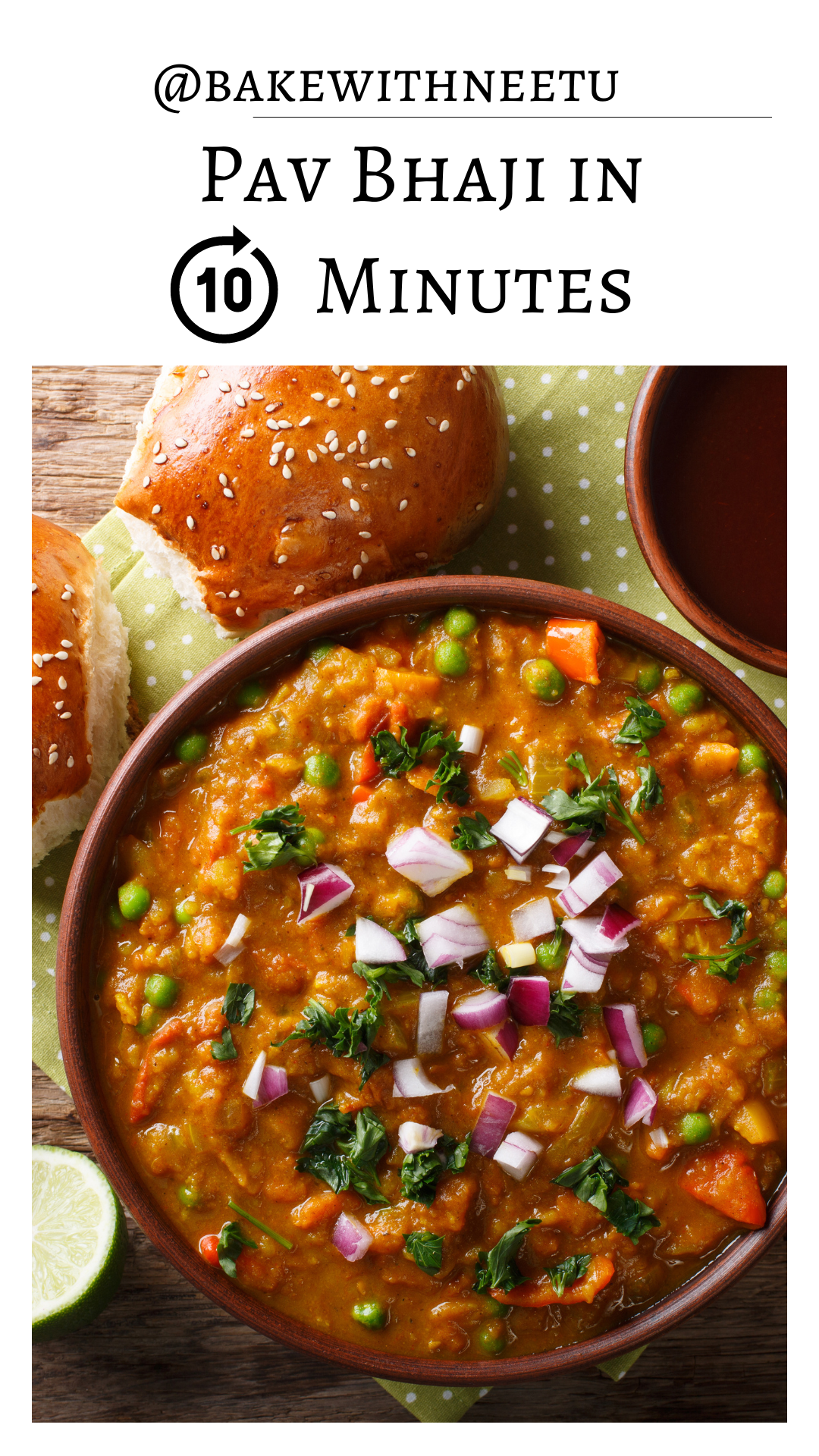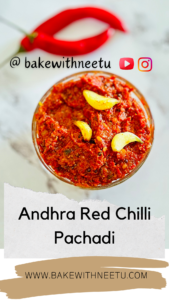Pav Bhaji, a symphony of spicy mashed vegetables served with buttery, soft buns, is not just food; it’s an emotion for many. This dish, which originated in the bustling streets of Mumbai in the 1850s, was initially crafted as a quick lunchtime meal for textile mill workers. Today, it has transcended its humble beginnings to become a beloved comfort food across India and beyond, symbolizing the country’s rich culinary diversity. In this comprehensive guide, I’ll take you through the history of Pav Bhaji, its cultural significance, a step-by-step recipe, variations, cooking tips, and its nutritional benefits, making it easy for you to bring a taste of Indian street food into your home.


The Origins and Evolution of Pav Bhaji
The story of Pav Bhaji starts in the mid-19th century, amidst the industrial boom of Mumbai (then Bombay). Designed to serve as a quick and substantial meal for textile mill workers, Pav Bhaji was a concoction of leftover vegetables from the day before, mashed up and seasoned with spices, served with pav, a type of soft bread. The dish was not only affordable but also nutritious and filling, making it an instant hit. Over the years, Pav Bhaji evolved, with various street vendors and restaurants adding their own twist to the recipe, making it the richly flavored dish we know today.
Cultural Significance
PavPav Bhaji is more than just a meal; it’s a cultural phenomenon that embodies the spirit of Mumbai. It represents the city’s fast-paced life, where something as simple as a meal can be vibrant, quick to serve, and incredibly satisfying. The dish has also played a significant role in bringing people together, transcending social and economic boundaries. It’s a common sight to see people from all walks of life standing by street vendors, enjoying Pav Bhaji off paper plates.
Ingredients and Recipe
Creating Pav Bhaji requires a medley of fresh vegetables, spices, and pav buns. Here’s a detailed recipe that captures the essence of this beloved dish.
Ingredients:
For the Bhaji:
• 2 tablespoons vegetable oil
• 3 tablespoons butter (plus extra for serving)
• 1 large onion, finely chopped
• 2 teaspoons ginger-garlic paste
• 2 medium tomatoes, finely chopped
• 1/2 cup green peas, fresh or frozen
• 2 medium potatoes, boiled and mashed
• 1/2 cup cauliflower, finely chopped
• 1/2 cup bell pepper, finely chopped
• 2 tablespoons Pav Bhaji Masala
• 1 teaspoon red chili powder (adjust to taste)
• Salt, to taste
• 1/2 cup water (adjust as needed)
• 2 tablespoons fresh coriander leaves, chopped
• Juice of one lemon
For Serving:
• Pav (Indian buns), as required
• Butter, for toasting Pav
• Onion, finely chopped, for garnish
• Lemon wedges, for garnish
Step-by-Step Recipe:
View this post on Instagram
- Prepare the Vegetables: Begin by boiling the potatoes until tender. Meanwhile, finely chop onions, tomatoes, cauliflower, and bell peppers.
- Cooking the Bhaji: Heat oil in a large pan or kadai over medium heat. Add 2 tablespoons of butter, letting it melt and blend with the oil. This mixture of oil and butter is key to getting the authentic flavor. Toss in the finely chopped onions, stirring until they turn translucent and slightly golden. This is where the foundation of flavor starts. Add the ginger-garlic paste, sautéing until the raw smell dissipates. It’s essential for the paste to cook thoroughly to avoid a raw ginger-garlic flavor in the bhaji. Next, introduce the chopped tomatoes. Cook them down until they are completely soft and the oil starts to separate from the mixture. This process, known as “bhunao” in Hindi, is crucial for developing depth in the dish. Incorporate the bell peppers, cauliflower, and green peas, cooking until they’re soft but not mushy. The idea is to maintain a bit of texture in the bhaji. Now, add the mashed potatoes, which act as a thickener and give body to the dish. Stir in Pav Bhaji Masala, red chili powder, and salt. The Pav Bhaji Masala is a blend of spices specifically designed for this dish, contributing to its unique taste and aroma. Add water gradually, mixing well to achieve a thick, but slightly runny consistency. Let the bhaji simmer for 10-15 minutes on low heat, allowing the flavors to meld together. Keep stirring occasionally to prevent the bhaji from sticking to the bottom of the pan. Finish by stirring in chopped coriander leaves and lemon juice for that fresh, tangy kick.
- Preparing the Pav: While the bhaji simmers, slice the pav buns horizontally (without cutting all the way through), and butter each side generously. Heat a pan over low heat and place the pav on it, cut side down, toasting until they’re crisp and golden. The butter not only prevents the pav from sticking to the pan but also adds a rich flavor.
- Serving: Serve the hot bhaji on a plate, topped with a dollop of butter that melts into the spicy vegetable mixture, accompanied by the crispy, buttered pav. Garnish with chopped onions and a wedge of lemon on the side. The onion adds a crunch, and the lemon juice can be squeezed over the bhaji to enhance its flavors.


Variations of Pav Bhaji:
Pav Bhaji has inspired a myriad of variations across different regions, each adding its unique twist to the classic recipe. Some popular versions include:
• Cheese Pav Bhaji: Where grated cheese is melted into the bhaji or sprinkled over it before serving.
• Jain Pav Bhaji: Made without onions and garlic, catering to the dietary restrictions of the Jain community in India.
• Kada Pav Bhaji: Where the vegetables are chopped instead of mashed, offering a different texture.
Nutritional Benefits
Despite its indulgent taste, Pav Bhaji can be quite nutritious. It’s packed with vitamins and minerals from the variety of vegetables used. Potatoes and peas provide carbohydrates and protein, while the tomatoes and lemon juice offer vitamin C and antioxidants. Using whole wheat pav can increase the fiber content, making it a more balanced meal.
Cooking Tips for Perfect Pav Bhaji
• Balance of Spices: The right amount of Pav Bhaji Masala is crucial. Start with the recommended amount and adjust according to taste.
• Cooking the Vegetables: Ensure the vegetables are cooked well before mashing. They should be soft enough to mash easily but not overcooked.
• Consistency: The consistency of the bhaji should be thick yet slightly runny. It should smoothly coat the pav when dipped.
Conclusion
Pav Bhaji is not just a dish; it’s a celebration of India’s culinary diversity, a testament to the ingenuity of Mumbai’s street food culture. It embodies the essence of comfort food with its rich, spicy flavors and buttery, soft pav. By following this recipe, you’re not just preparing a meal; you’re bringing a piece of Mumbai’s vibrant street food scene into your home. Whether you’re cooking for a crowd or looking for a comforting meal, Pav Bhaji promises a delicious and heartwarming experience.





